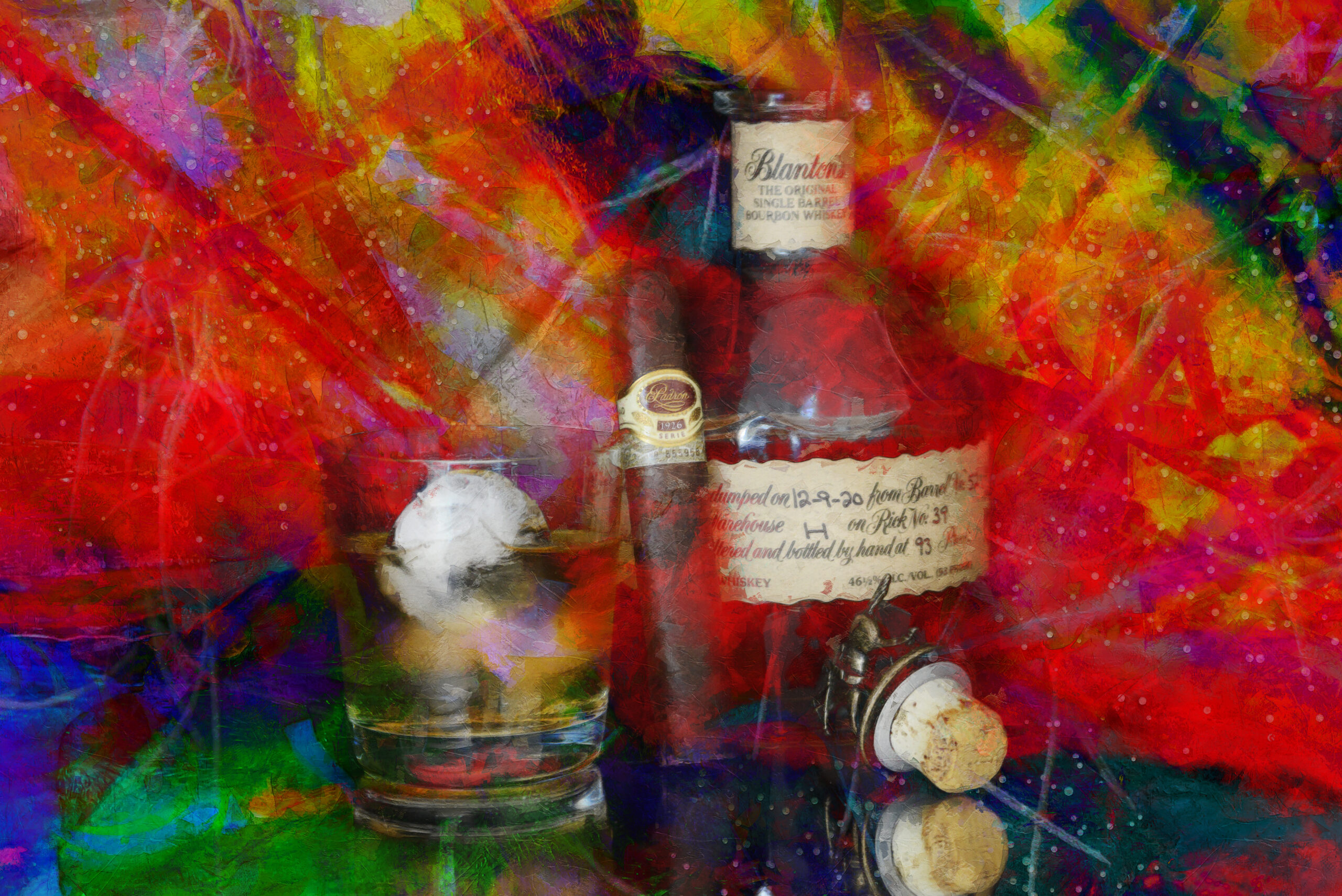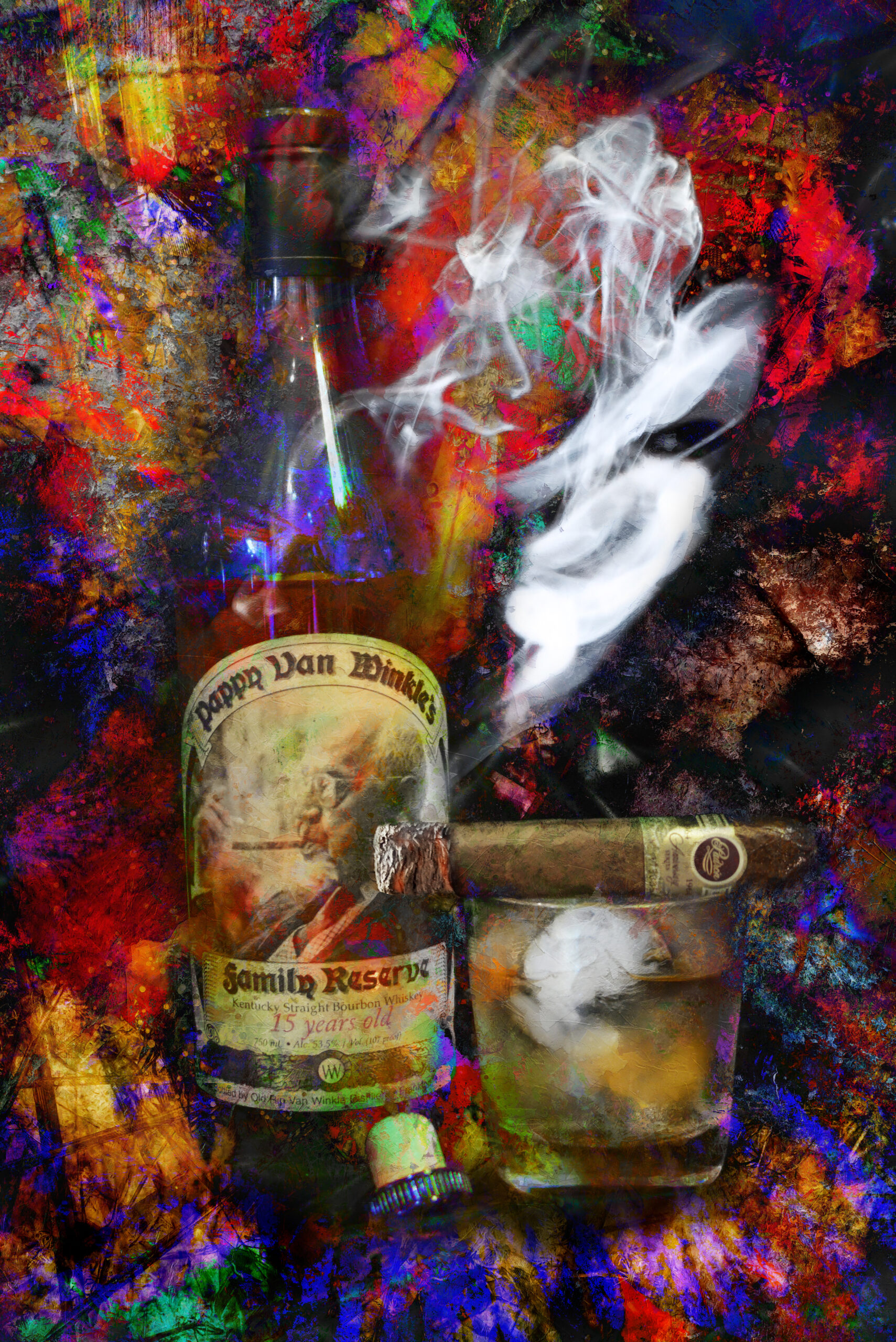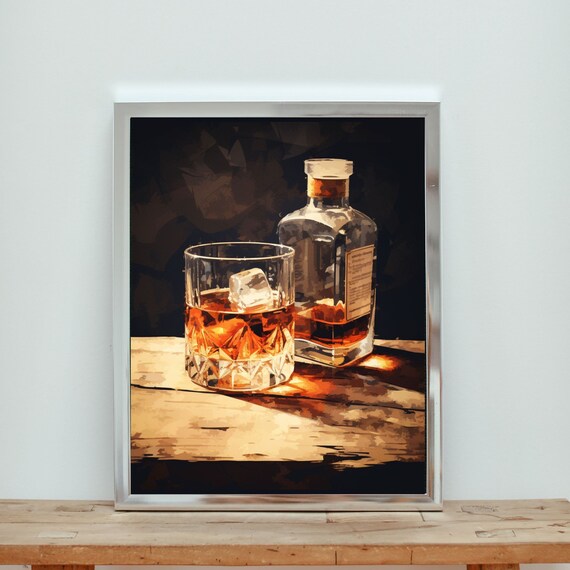Whiskey Art: Capturing the Essence of Distillation in Every Brushstroke
Whiskey Art: Capturing the Essence of Distillation in Every Brushstroke
Blog Article
The Value of Whiskey Art in Celebrating Heritage and Workmanship in the Beverage Sector
The complex connection in between bourbon art and the party of heritage and workmanship within the drink industry can not be overstated. With attentively developed tags and containers, whiskey brands encapsulate their historic roots and the artisanal skills that specify their production methods. This imaginative dimension not just enhances market charm but also functions as an avenue for cultural storytelling, promoting a much deeper connection between the consumer and the craft. As we explore the numerous facets of this subject, interesting concerns concerning the impact of contemporary fads on typical methods occur, prompting more assessment.
The Historical Origins of Whiskey
At the heart of bourbon's appeal lies an abundant tapestry of historical origins that map back to ancient civilizations. The origins of whiskey can be linked to the purification techniques of the Sumerians and Babylonians around 2000 BCE, where early types of fermented grain drinks started to arise. It was in the Center Ages that the art of distillation progressed substantially, particularly in Ireland and Scotland, leading to the development of bourbon as we know it today.
The term "bourbon" itself originates from the Gaelic word "uisce beatha," indicating "water of life." This expression emphasizes the cultural relevance of bourbon in Celtic cultures, where it was typically connected with routines, celebrations, and communal bonding. By the 15th century, distillation came to be an identified craft within reclusive areas, leading the way for the facility of lawful distilleries.
As trade paths expanded, scotch's appeal expanded, going beyond regional limits and recording the passion of connoisseurs worldwide. Whiskey Art. This historical journey shows not just the workmanship behind scotch manufacturing however additionally its indispensable duty in cultural and social contexts, noting it as a significant drink throughout background
Artistic Expression in Branding
Bourbon branding stands as an engaging junction of virtuosity and business, where aesthetic identity plays a vital function fit consumer understanding. The appearances of bourbon tags, product packaging, and advertising materials reflect not only the brand name's tale however likewise its core values and heritage. Via imaginative expression, distilleries share a narrative that resonates with consumers, stimulating feelings and sparking connections.
The usage of color, typography, and images in branding serves to differentiate items in a saturated market. For example, traditional concepts may stimulate a sense of credibility and craftsmanship, while modern styles can represent technology and forward-thinking. This critical creative instructions enhances brand name recognition and loyalty, permitting consumers to create an individual connection with the bourbon they choose.
Additionally, artistic expression in branding commonly serves as an event of local heritage. Distilleries frequently integrate neighborhood symbols or historic referrals into their styles, developing a sense of location that welcomes customers to partake in a wider social experience. Inevitably, the artistry behind scotch branding not just boosts visual appeal however additionally enriches the overall story of the brand name, cultivating a deeper recognition for the workmanship and heritage ingrained in moved here each bottle.
Craftsmanship in Bottle Style
The virtuosity evident in scotch branding prolongs past aesthetic identity to encompass the craftsmanship entailed in container layout. Each container acts as a vessel not just for the spirit within, but likewise for the tale it outlines its tradition, high quality, and beginning. The style procedure requires meticulous attention to detail, as elements such as shape, product, and closure contribute significantly to the overall assumption of the bourbon.
Workmanship in bottle design involves picking high-quality glass that can boost the bourbon's shade and clearness, while also providing a responsive experience for the customer. The silhouette of the container have to be both practical and visually appealing, frequently reflecting the heritage of the brand name. Numerous distilleries go with unique forms or embossed logo designs that evoke a sense of credibility and history.
Moreover, the tag design and typography play a crucial duty in interacting the brand's story. Bourbon Art. A well-crafted container not only astounds the consumer's eye yet likewise reinforces the brand name's dedication to high quality and tradition. This way, the craftsmanship of container design comes to be an important facet of the whiskey experience, combining artistry with an extensive respect for heritage
Social Significance of Scotch Art
Commemorating custom and workmanship, the cultural relevance of whiskey art transcends plain appearances, intertwining with the historical and social narratives of the areas from which it comes from. Each container functions as a canvas, portraying the one-of-a-kind stories, mythology, and traditions that have formed neighborhood whiskey-making practices. The complex layouts frequently show the heritage of the distillers, including symbols and themes that reverberate with the society and worths of their communities.

Additionally, scotch art plays a vital function in communal events and parties, serving as a substantial link navigate here in between individuals and their shared experiences. By appreciating the virtuosity in scotch product packaging, consumers cultivate a much deeper understanding and respect for the craft, ultimately enriching their enjoyment of the beverage itself.
Modern Trends in Bourbon Presentation
Recently, the discussion of whiskey has actually advanced to show modern preferences and trends while still recognizing traditional craftsmanship - Realism Art. Distilleries are increasingly concentrating on visual elements that enhance the general alcohol consumption experience, linking the gap between heritage and modernity
Ingenious container layouts have emerged, commonly including sustainable materials and creative labels that inform engaging tales. Many brands now collaborate with regional musicians, instilling their items with one-of-a-kind aesthetic expressions that reverberate with customers. Additionally, limited-edition releases like this are frequently packaged in collectible containers, adding value and charm for lovers.

Verdict
In conclusion, whiskey art serves as an important conduit for expressing the heritage and craftsmanship inherent in the beverage industry. Via detailed branding, cutting-edge container layouts, and culturally considerable creative aspects, scotch brands effectively recognize their practices and attach with customers.


Craftsmanship in container layout includes choosing premium glass that can enhance the whiskey's shade and quality, while additionally supplying a tactile experience for the consumer. In this means, the workmanship of bottle design comes to be a crucial element of the whiskey experience, combining creativity with a profound regard for heritage.
In final thought, whiskey art offers as a crucial conduit for sharing the heritage and workmanship fundamental in the drink industry.
Report this page